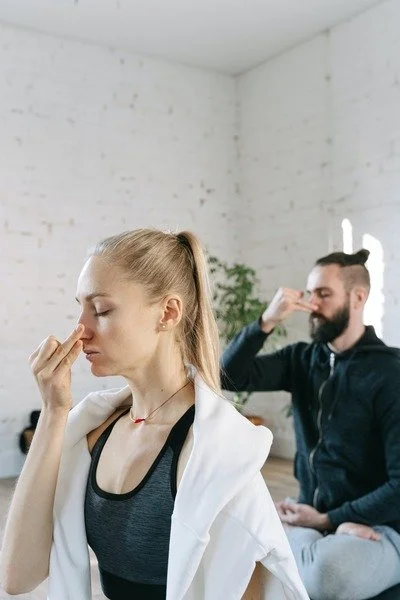Stress is not all in your mind. It’s also in your body…and it can feel really bad!
Whether the stress starts as something physical or mental, a feedback loop can form that intensifies stress levels.
It looks something like this - I think this situation is too much. My body starts to prepare for a challenge - my muscles tense, I breathe faster and shallower, this makes it harder to focus and my thoughts feel like they’re racing. Since I can’t focus, I become even more convinced that this is too much, which makes me even more tense…and so on…the physical and mental impacts of stress are stressful!
If you can break this cycle, you can calm your system and turn this process around.
You can do this through breathing exercises, physical and mental relaxation exercises, and mindfulness exercises.
Deep breathing for stress management
In this post we’ll focus on breathing exercises, and I’ll cover the others in their own posts.
Why breathing exercises?
I’ve had people laugh at me, roll their eyes, and even get offended when I recommended breathing as a tool. Breathing is talked about so much that I think it’s becoming undervalued because it seems overused. I also think some people think I’m minimizing their problems when I suggest breathing as a tool.
To their credit, breathing is not a cure-all. Not even close. In fact, I get pretty mad when I hear people tell me that the only tool their therapists taught them for managing stress or anxiety was deep breathing (but that’s a post for another day).
What breathing exercises do provide is a helpful base to build from.
take shallow breaths
Rather than try to explain why, let’s do a little experiment. Set a timer for 30 seconds, and for that 30 seconds, take fast shallow breaths. How do you feel? Light-headed? Foggy? Tense or on-edge? Maybe even a little anxious?
Test your breathing technique
Now, let’s test your deep breathing skills (most people do this wrong). Put one hand on your chest and one on your stomach and take three deep breaths. Which hand goes up first/farthest? If you’re really taking deep breaths, it should be the one on your stomach. I won’t go into the physical mechanics here, but to fill your lungs, you need to do what’s called diaphragmatic, or abdominal breathing, and to do it right, your stomach needs to expand.
Learn to take deep breaths
If the hand on your chest moved more, a good way to turn this around is to start by blowing all of the air out first. Blow out through your mouth, and squeeze your belly button back to your spine. Once you’ve gotten out as much air as possible, allow air to come in through your nose and fill your lungs, keeping your mouth closed. Most people will find this helps them to get a good diaphragmatic breath.
Experiment with Deep breathing
Once you’ve gotten the hang of diaphragmatic breathing, try experimenting with different deep breathing techniques, such as:
Long Exhale Breathing - Focus on making your exhales longer than your inhales. Breathing in for a count of four and out for a count of eight is a common way of doing this, but if this is difficult, you can start by extending your exhale by a count of one and work your way up. Longer exhales signal safety to your nervous system. Repeat for several breaths.
“Box” or “Square” Breathing - Breathe out for a count of four, hold for four, breathe in for four, and hold for four again. Repeat four or five times.
Alternate Nostril Breathing - Hold your hand to your nose and use your fingers to close one nostril and breathe into the other. Then use your fingers to close the other nostril, breathe out and back in. Continue alternating nostrils for in and out breaths, ending on an exhalation through the left nostril. Work up to five minutes.
All of these breathing techniques have been associated with decreasing heart-rate, decreasing blood-pressure, and improved ability to handle stressful situations. They are most effective when practiced daily and not just used when you’re already feeling particularly stressed or anxious.
Happy breathing!


